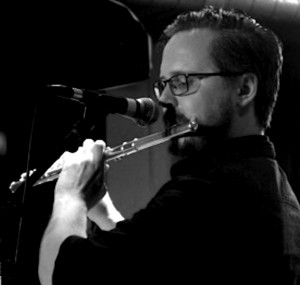The K.J.O. – why & how: A history of performance
“The group is a place where experimentation is welcomed, but there is also a keen sense of history. All of these things mix together. Old and new, young and old, theatre and music, prepared and improvised, dissonance and consonance.”

I was asked to join the Kinetic Jazz orchestra by Graham in 2013. He was ringing around looking for players and someone gave him my number. Always on the lookout for more opportunities to play jazz I readily accepted. I didn’t know what it would be but was open to something new. The first gig showed me how this was a different jazz experience. The band wasn’t another group of friends all sharing the same graduation date from a music degree and so all of the same generation. The formation of the group was different and so its composition and outlook was different. Just as if one changes the process of music composition there is a different artistic result, if a project starts from a different beginning it produces different and unique art.
In a way, KJO started life decades earlier, germinating from Graham and Jepke’s Kinetic Energy Theatre Company. Rare for a big band, its inception was not the result of musicians but of artists of a different type. As a result, its performances involve theatre and they involve politics. Its pieces don’t represent only the inevitable inward gaze of the specialist but also the outlook of an interested and involved outsider.
Graham often touts the age range in the group – from something like 20 to something like 70. A wide gap that ensures a diversity of outlook and a diversity of repertoire as the ensemble writes its own pieces to a large degree. While the bedrock of the material is Mike Gibbs and Gil Evans arrangements and originals the band has been adding to this with its own material and that of collaborators.
I’ve been trying to do some writing myself and have found the instrumentation and feel of the band to be a strong influence on the way pieces are written. The band includes tuba and vibraphone, which, while not unheard of, are certainly uncommon additions and make one think strongly of the Gil Evans pieces that make up the repertoire in the case of the tuba and MJQ-style music in the case of the vibraphone. The music itself often gives a wide berth to the improviser and is rarely nailed down to a single time feel or conventional chord pattern (depending on how one defines these things of course!). While each contribution from each composer is unique, still they tend to fit in with a theme – a feeling of stretched time, of open and slightly asymmetrical forms, of unexpected dissonance and simple beauty.
Similarly the players contribute, as with all jazz, with their improvised solos. The act of performance and composition is combined and each performance gives the players another chance to stamp a new compositional take on their own or others’ pieces.
For more information on the KJO














